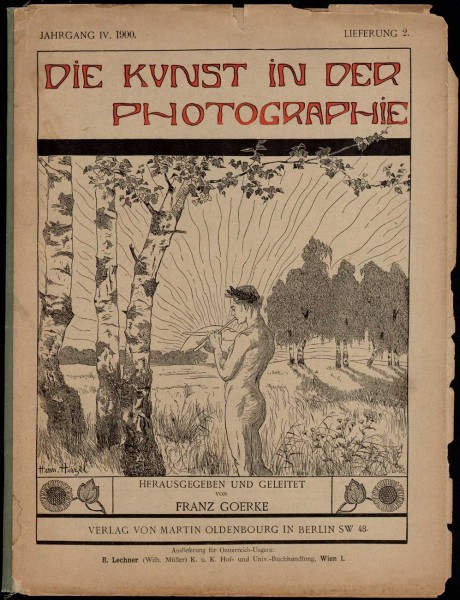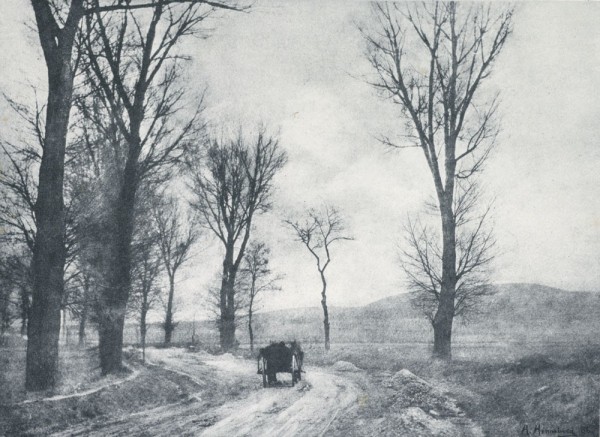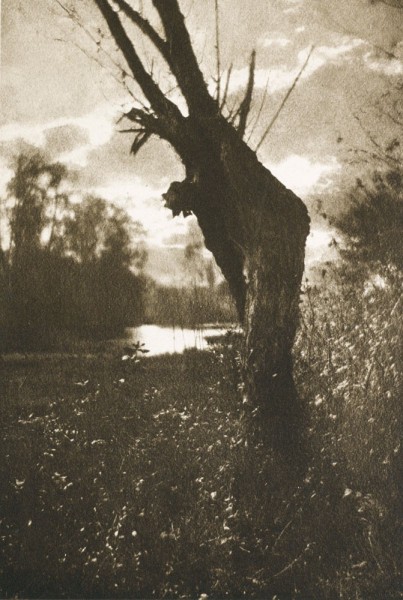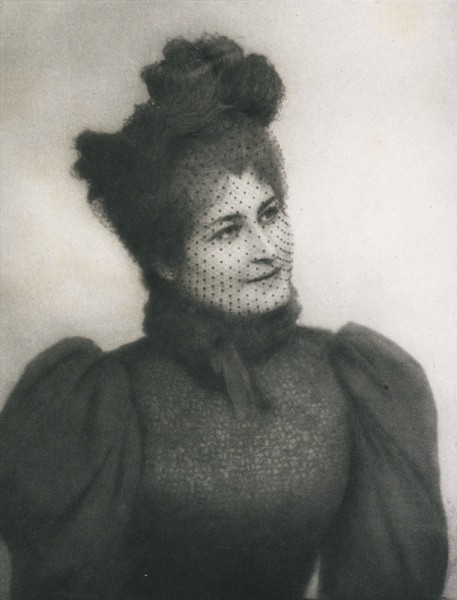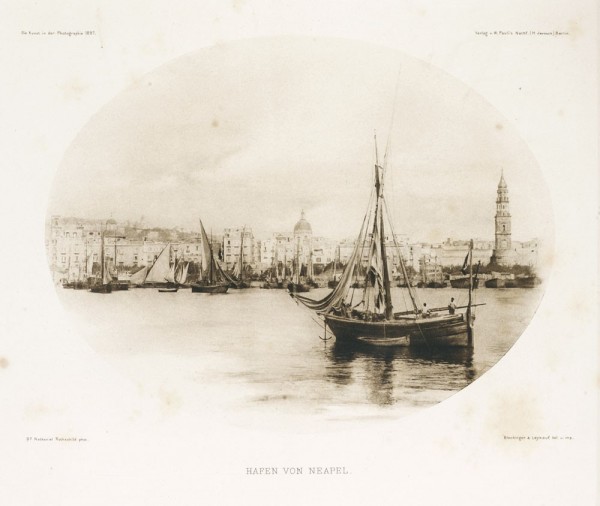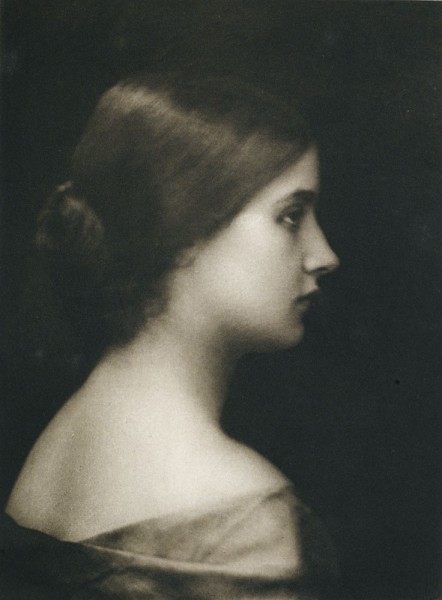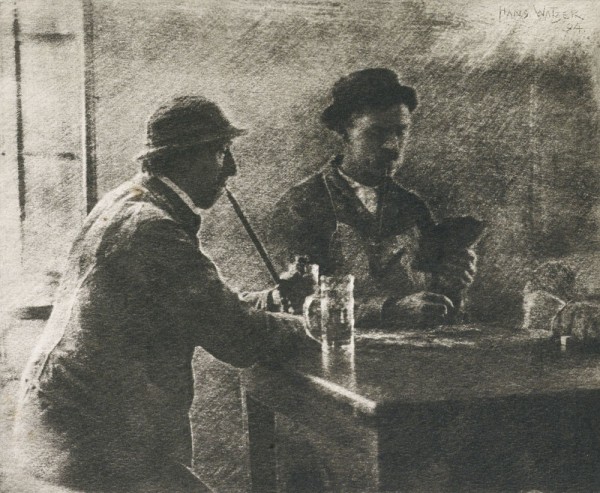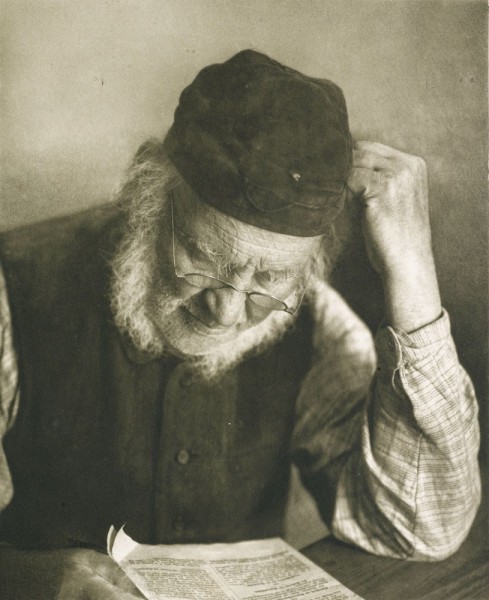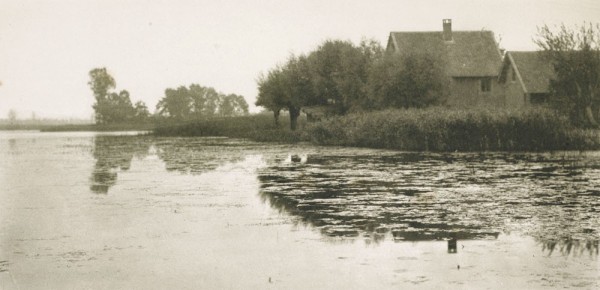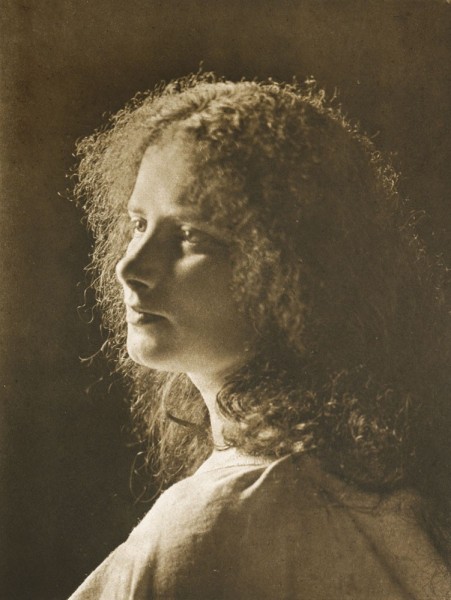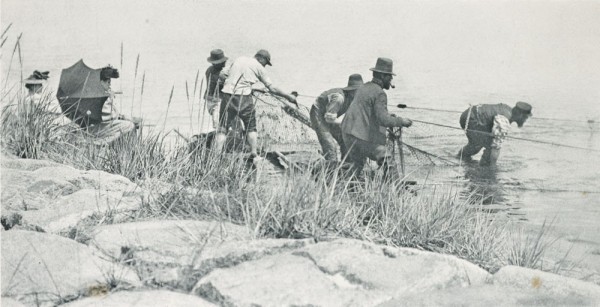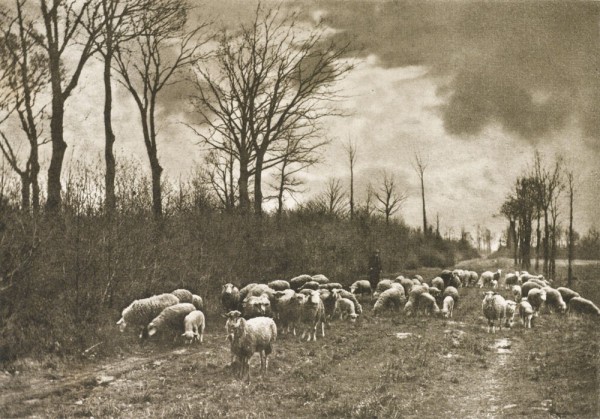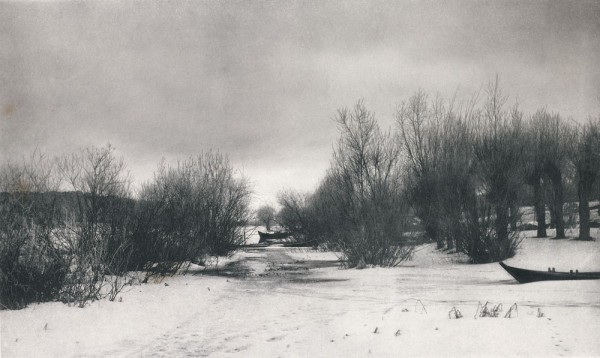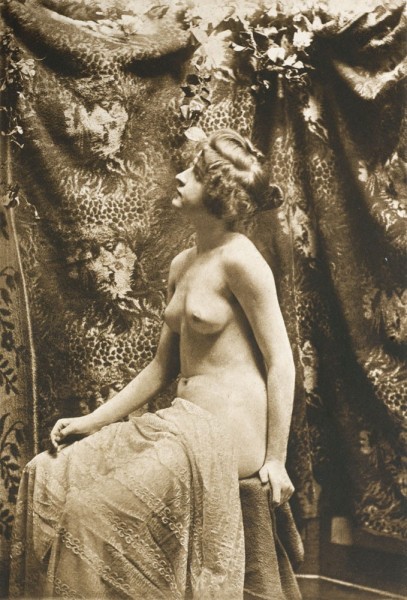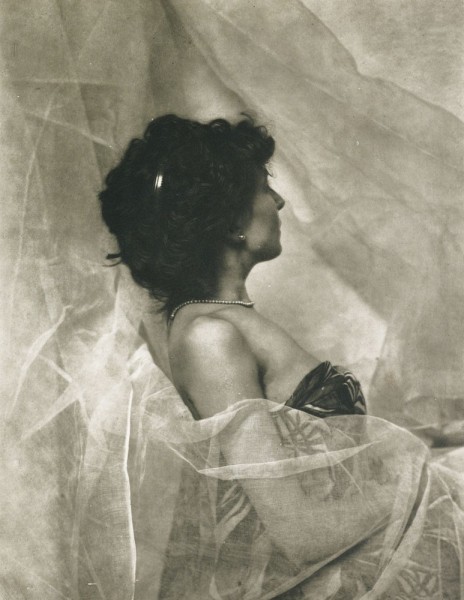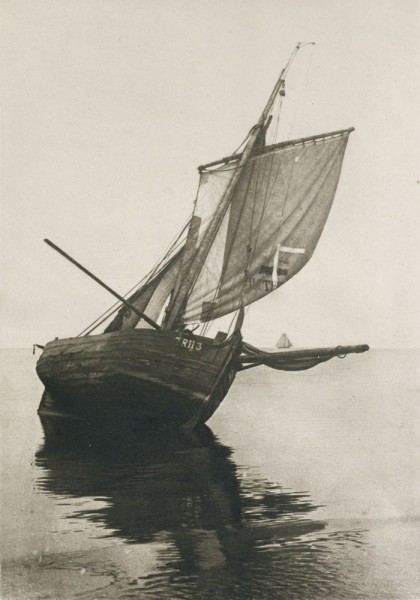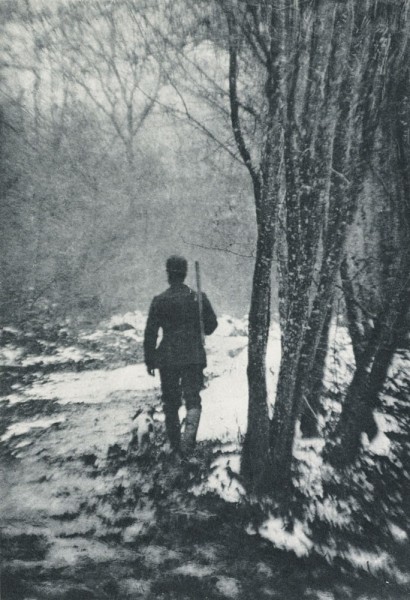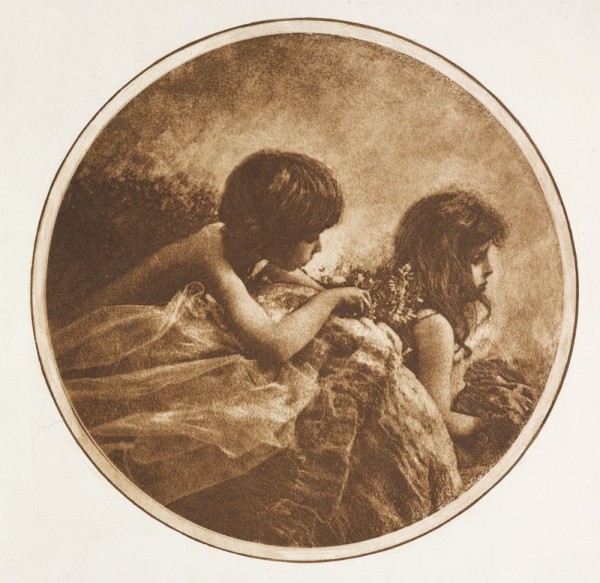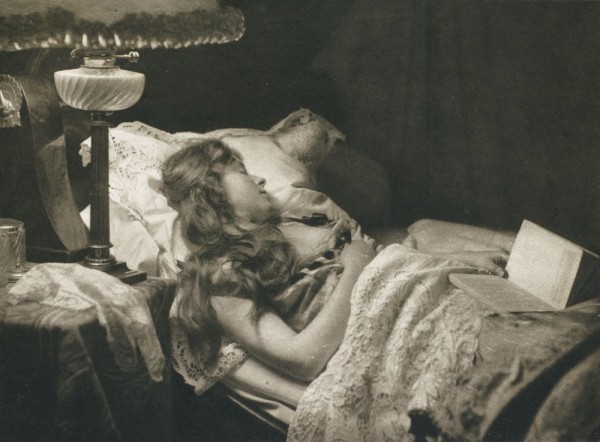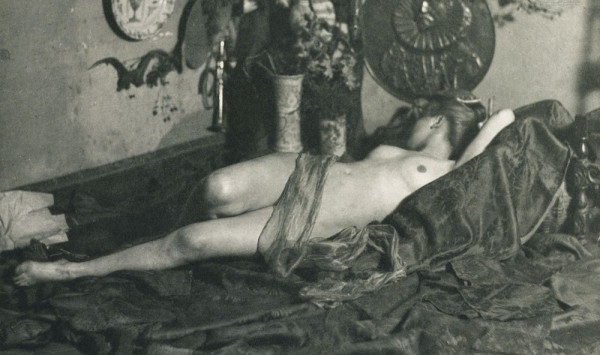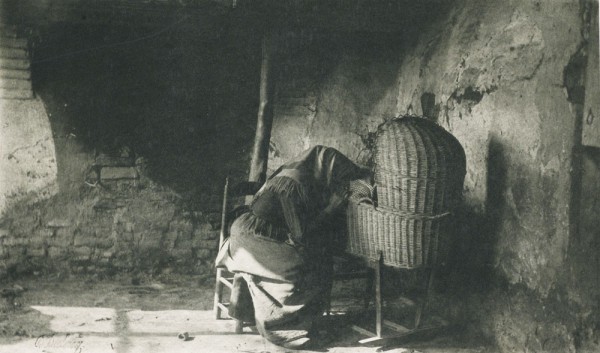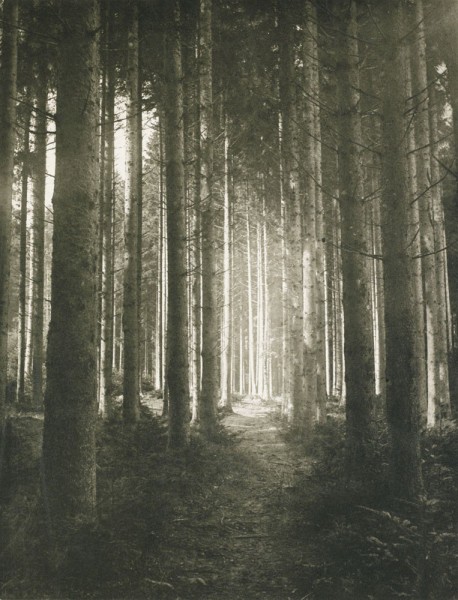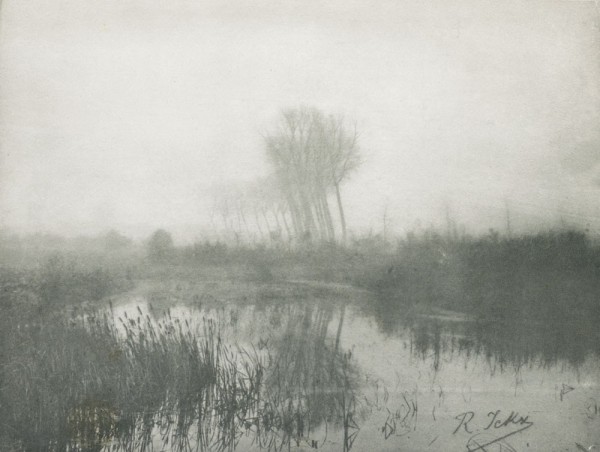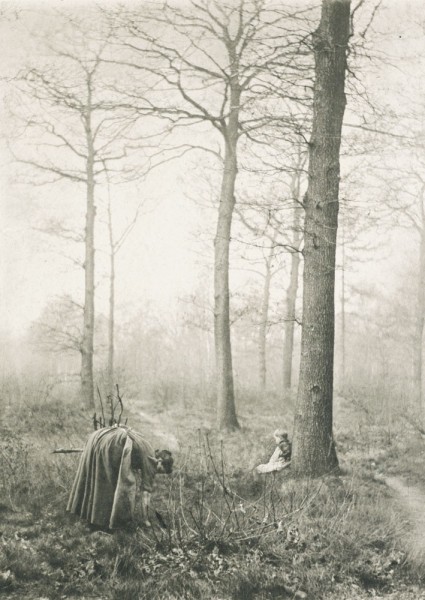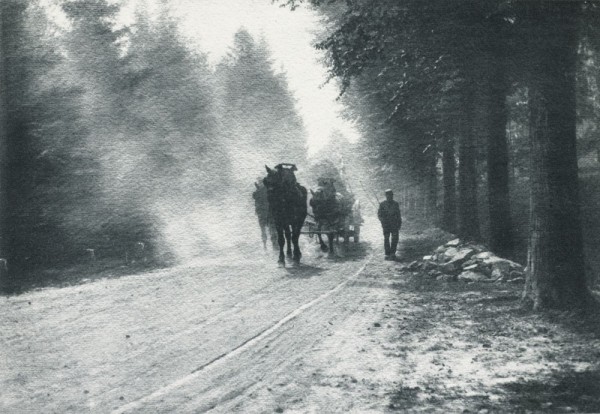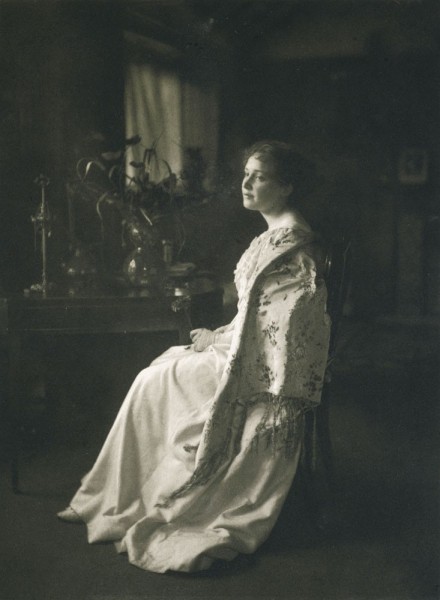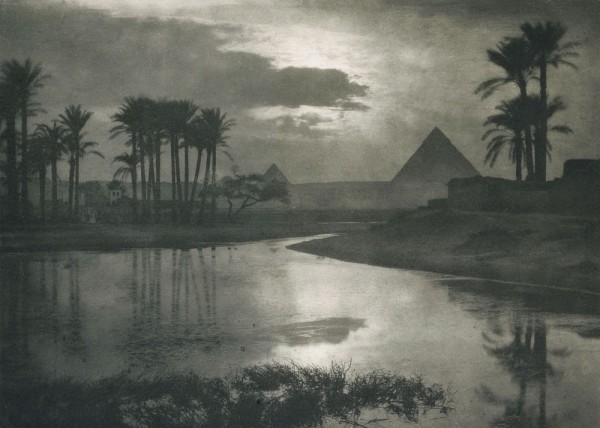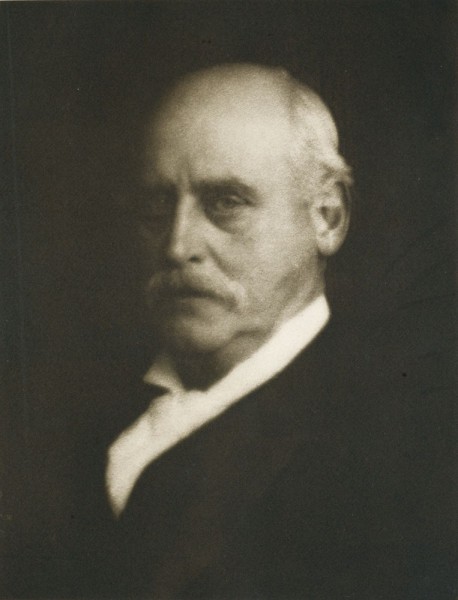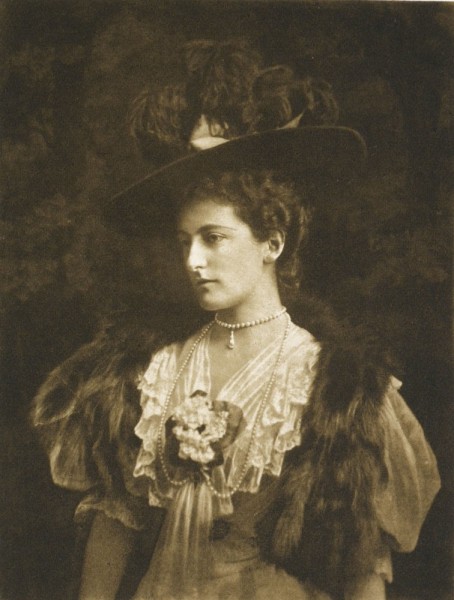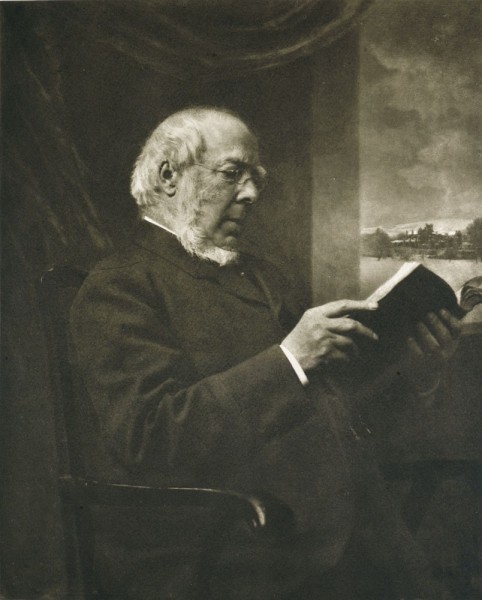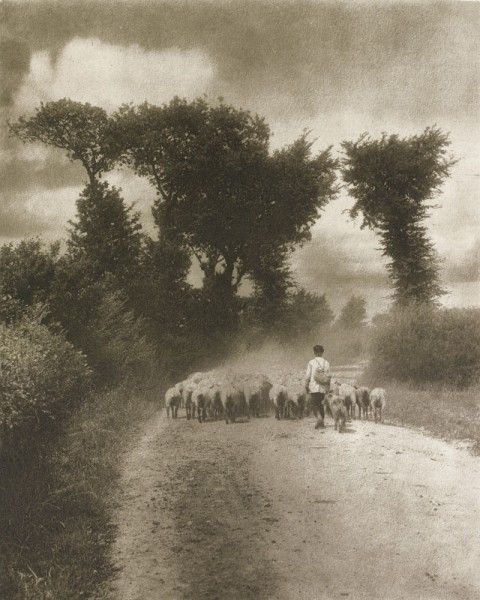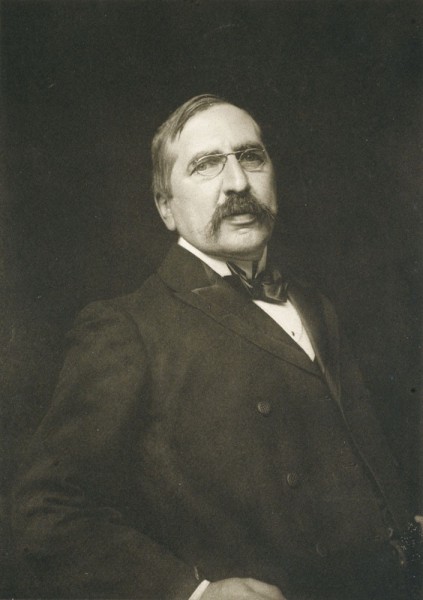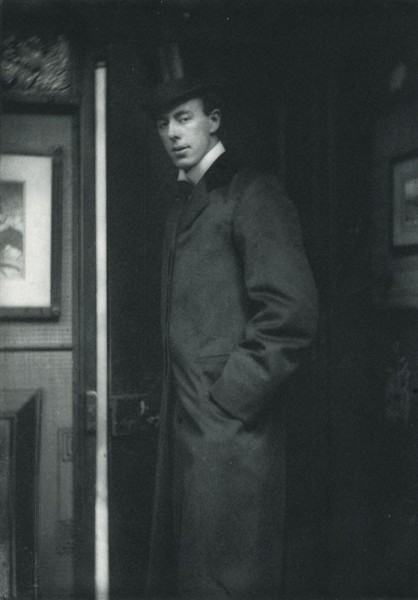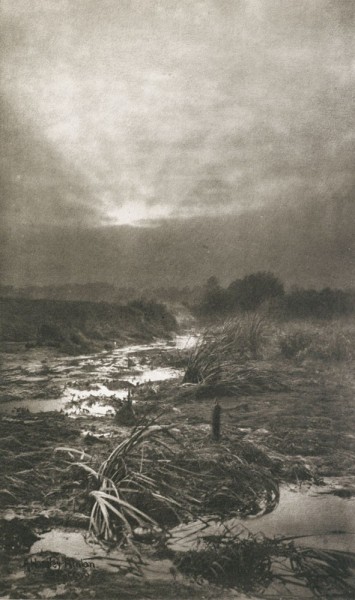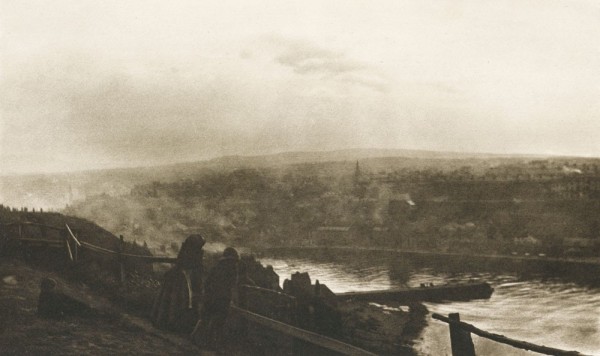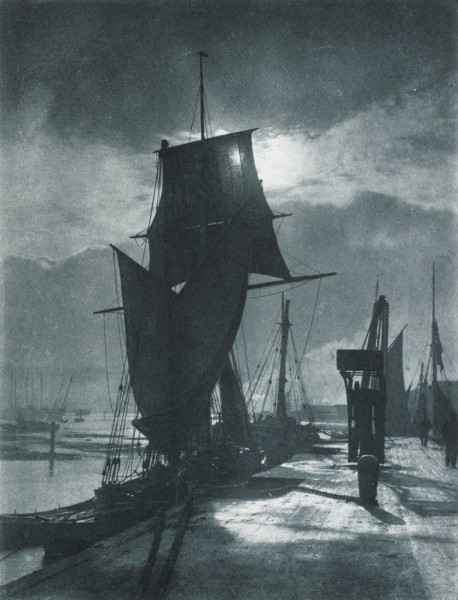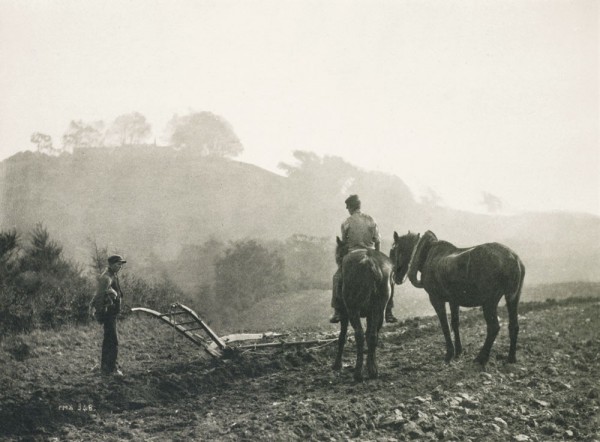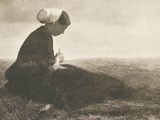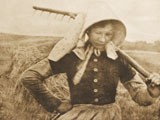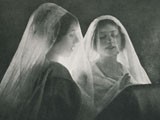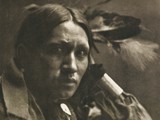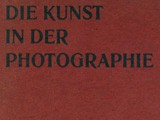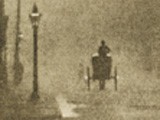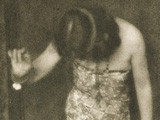Die Kunst in der Photographie: 1897PhotographersJames Craig Annan, Ernest R. Ashton, Paul Bergon, Hauptmann Böhmer, Maurice Bremard, Maurice Bucquet, Ferdinand Coste, Reginald Craigie, William Crooke, Baron Albert De Rothschild, Baron Nathaniel De Rothschild, Désiré Declercq, Robert Demachy, Albert-Edouard Drains, Karl Greger, Edouard Hannon, Dr. Hugo Henneberg, Alfred Horsley Hinton, Frederick Hollyer, Romain Ickx, Heinrich Kühn, Rev. F. C. Lambert, Gustave Marissiaux, Frank Meadow Sutcliffe, Dr. Adolf Miethe, Léonard Misonne, Gräfin Marie Oriola, Constant Puyo, Otto Rau, Otto Scharf, Philipp Ritter Von Schoeller, Hans Watzek, Hans Winkelmann ArtistHermann Hirzel CountryAustria, Germany, France, Belgium, Scotland, England MediumPhotogravure, Woodcut: Applied Color, Photogravure: Chine-collé JournalDie Kunst in der Photographie 1897 AtelierBlechinger & Leykauf, Meisenbach, Riffarth & Co. Year1897 Background of the Publication: Die Kunst in der PhotographieBetween 1897-1908, 356 individual large format, hand-pulled photogravures and 318 tipped autotypes (halftones) were issued as part of 66 individual art folios in the German photographic art journal: Die Kunst in der Photographie.” -translated to The Art in Photography. Franz Goerke (1856-1931), the editor and publisher of this publication, was an important exponent of German art photography. Dr. Hermann Wilhelm Vogel, who taught the young Alfred Stieglitz photographic chemistry in Germany in his formative years, commented in a photographic review during its’ first year of publication (1897): Die Kunst in der Photographie is a …”totally new and original undertaking. Many waffle about art in photography, but what nonsense. Here (speaking of Goerke) we are dealing with the work of a sensitive expert.” 1.
And a modern view, from author and collector Rolf H. Krauss, writing in the publication History of Photography:
“This publication may well be the most important and valuable documentation of art photography in the German language but, because of its rarity, has remained virtually unknown.” 2.
This article is critical for our understanding of the publication’s importance in the history of photography. Krauss provides background on publisher Goerke, a “sensitive expert” born on November 14, 1856 in the former German city of Königsberg (now Kaliningrad). He received his original training in banking, but was apparently inclined to devote himself to more general studies. He photographed as a hobby, and in October 1889 he founded, together with 52 other members, the “Free Photographic Association” in Berlin, in which he accepted the office of Recorder. The article states Goerke was president of the association from 1912-1919. 3.
In 1897, the same year he first published Die Kunst in der Photographie, Goerke became the director of “Urania” in Berlin. Founded in 1888, Urania was an institution for continuing popular education in the sciences named for the Greek muse of astronomy and astrology. Since 1968, the organization was renamed the German Cultural Association, Berlin, a Community Institution for the Cultivation of Science, Research, Art, and Cultural Film, as well as Public Readings by Poets”. 4.
After 1893, Krauss has researched that Goerke’s involvement with the Free Photographic Association was of a populist nature: Using his own photographs converted into lantern slides, Goerke was one of the first to put on and promote “Projector Evenings” for club members. 5. “Learning through Observation” was the goal for Urania members, and it was embraced by Goerke and made him a follower of Jugendstil (art nouveau): “His faith in the beneficial fruits of the science, his love of the art and his conviction that art is capable of developing a person’s artistic sensibility, together with his missionary zeal and determination to pass his insights on to others, made Goerke an exponent of the Jugendstil. This happened in a historic moment in which it was feasible for non-professionals, dilettantes, amateurs and hobbyists to generate a new sense of the times.” 6.
As an active member and officer of the Free Photographic Association, Goerke had directed “the aesthetic parts” of numerous photographic exhibitions associated with his club, including the important 1896 International Exhibition of Amateur Photography (in the Reichstag) and also “those in the Royal Academy of Arts, Berlin, 1902 and 1905.” 7.
With this background, exponent Goerke had the connections necessary to give the new artistic photographic movement room to finally stand on its’ own. In the introduction to the first issue of Die Kunst in der Photographie he writes:
“The development of amateur photography has reached a critical point. Out of the wide circle of amateurs has emerged a small community which sees more in photography than a playful hobby. A new era in amateur photography has thereby begun, the era of artistic and highly personal photography… The publisher has in this work set himself the task of presenting an overview of this kind of photography, its problems and achievements, through the medium of reproduction prints.” (translated from the German)
In 1910, two years after this important publication ended, Krauss makes the observation that the publisher Wilhelm Knapp, “one may surmise, put an end to this costly prestige project.” Concluding, Krauss says Goerke was totally justified by saying: “This work, to the success of which the finest art photographers at home and abroad have contributed, is likely to be of permanent value in the history and development of art photography.” 8.
The number of issues varied through the years. From 1897-1903, six issues were published each year, or every other month. Beginning in 1904, it was published on a quarterly basis until 1907. The final year featured 8 individual issues. The publication was issued loose in large card-stock folios. Letterpress was issued along with beautiful large plate photogravures and starting in 1901, autotypes. (halftones) The autotype plates were tipped onto elaborate colored art papers and sometimes over-matted, always complimenting the accompanying gravures. In total, 674 plates or “art supplements” made up the full run of Die Kunst in der Photographie.
In the volume German Photographic Literature 1839-1978, bibliographic entry #00370 says of Die Kunst in der Photographie:
“It was the first photographic journal in the world that concerned itself only with the photographic image and its aesthetics, which ignored all other themes, and treated art photography as an international movement.” 9.
A fascinating comparison with the Alfred Stieglitz publication Camera Work is also included in the Krauss overview of Die Kunst in der Photographie. First published six years before Camera Work #1 debuted in 1903, the importance of this largely unknown publication is the effect it had on photographic pictorialism and the promotion of artistic photography worldwide. Strikingly, the work of 23 individual photographers appear in both publications. Certainly, the need for more scholarly research is warranted here. A total of 278 individual photographers from around the world made contributions to this groundbreaking publication. It is difficult to deny Die Kunst in der Photographie had an immense influence that has been largely ignored in the English-language histories of photography. 10. Read More Notes1. Rolf H. Krauss: Die Kunst in der Photographie, the German Camera Work: Part 1: The Publication and its Images: History of Photography, Volume 10, Number 4, October-December 1986: p. 267
2. Ibid: p. 265
3. Ibid: p. 267
4. Ibid: p. 268
5. Ibid: p. 268
6. Ibid: p. 268
7. Ibid: pp. 267-268
8. Ibid: p. 270
9. Frank Heidtmann: German Photographic Literature, 1839-1978: Theory, Technology, Visual: A Classified Bibliography of German-Language Photographic Publications : München ; New York ; London ; Paris : Saur: 1980
10. Rolf H. Krauss: Die Kunst in der Photographie, the German Camera Work: Part 2: Texts in Abstract: History of Photography, Volume 11, Number 1, January-March 1987 Introduction: 1897The first year of Die Kunst in der Photographie (1897) contains 36 photogravures and 52 pages of text printed with additional halftone photographic illustrations. Themes for the first six issues are as follows:
1. Der Camera-Club in Wien
2. Die Berliner Vereine
3. Der Photo-Club in Paris
4. Die Association Belge de Photographie
5/6: The Linked Ring
Articles printed beginning on the letterpress pages are by the following authors:
1. Forward by Franz Goerke
3. Alfred Buschbeck: Zur Geschichte der künstlerischen Bestrebungen im Wiener Camera-Club.
9. Walter Körber: Die optischen Täuschungen im Dienste der bildenden Kunst.
21. Franz Goerke: Der Photo-Club in Paris
29. Marcel Vanderkindere: (Brüssel): Die “Association belge de Photographie”
37. Alfred Horsley Hinton: Die englische Schule der künstlerischen Photographie.
49. Richard Stettiner: Gedanken eines Theortikers über Bildnissphotographie.
Introduction by Franz GoerkeThe development of amateur photography has now arrived at a turning point. Among the many amateurs a small group has formed which sees more in photography rather than a game or a way to spend time. A new era for amateur photography has dawned – the artistic, the personal photography.
How this developed, how it had to culminate, this is reflected by the outstanding essays by Alfred Buschbeck, a Horsley Hinton, a Marcel Vanderkindere, and the editor has attempted to achieve in this issue to demonstrate the problems of artistic photography, the results which have been documented, and to show the reproductions.
First and foremost we are attempting to showcase the master works of the Vienna Camera-Club, the Paris Photo-Club and the Linked Ring in England; alongside we are showing the Association belge de Photographie in Brussels and also the Berliner Vereine which are included for the first time in the society of art photographers. They have no reason to withhold their outstanding works, but they lack a meeting location where they can gather to work together artistically, which other organizations have available in excellent form.
Many important artists of these organizations are not included which we were unable to reproduce for this issue, since we can only publish a limited number of art pages in each issue, but we do not want to deny them the well-earned place, since it will be our next commitment to repeat and continue the stroll through cultural lands which appreciate artistic photography – we are thinking first of America, Holland, Italy and Russia – at the same time we also want to deeply honor the cultural life in our German clubs, and at this first time Hamburg, where the Society for the Development of Amateur-Photography has been instrumental in promoting artistic photography in Germany, therefore we will devote one of the first issues of the second year to the artistic efforts of this society.
It is our goal to be constantly looking with open eyes inside and outside Germany and plan to document the latest developments in this art form, so it can remain a true mirror image of artistic photography.
With my thanks to all devoted and unselfish assistants which have helped us to give this issue its very own character, to which we are committed since it is our vision to place artistic photography in its very own honorable place next to all other art forms.
In order to achieve this vision, we need the cooperation of other art connoisseurs. –
It is a very open and for a long time debated question if photography can even be regarded as art, a question which brings contradictory opinions by those who are closest to art – the artists themselves. While some of them do not relate photography with ‘art’ at all, others recognize the loving closeness of the artistic emotions of amateur photography, and even in the contradiction of the opinions lays the principal meaning of this question. Although there might be limits to artistic photography which cannot be surpassed, at least the successful efforts should be recognized which creates artistic achievements and at the same time elevates photography to a level where it should be – an art form.
—-Franz Goerke
[With thanks to Helga Lunsford & Wilhelm Bierling for providing the English translation from the original German.] Franz Goerke : An appreciation by Paul Hanneke (1917)Franz Goerke is well known in our circles and still appreciated by the market as somebody that taught us to value more our homeland.
Goerke’s earlier images from the Mark time became exemplary. Further, this outstanding collection was soon to be followed by more grandiose series from Mecklenburg and Provinces from the Baltic Sea. Goerke revealed true beauty in atmospheric landscape images. He maintained the artistic arrangement of slide pictures in connection with their projection. It is here where he gave us exceptional pieces, not only in their technical execution, but rather in highly picturesque qualities.
Equally masterful like the Mark, Goerke treated the changes of the North German coasts and the far sea, in its changing movements, life and driving at land and on sea. In addition, his later fruitful travels to distant countries gave occasion to further collecting works in picture and writing.
Subsequently, we let follow a short abstract of Goerke’s life, an appraisal of his many-sided activity in photography as well as in general appreciation of nature and geography.
Franz Goerke was born on November 16th, 1856 in Koenigsberg, Prussia. Initially he became a banker, but later dedicated his time exclusively and in more detail to photography as well as to nature and culture studies. Especially the artistic photography was encouraged early by Goerke.
He collected a wide range of photographs on his extensive national and foreign travels, which he used for slide shows of which he became very profound since the end of the 80s.
In 1897 Goerke was offered a position within the directorate of the Berliner Urania, a position which he still has today.
To speak here more about his great work at this institute may leave other activities implicit. Important, however, is to mention Goerke’s, in collaboration with Prof. Dr. Donath at the Urania Institute, establishment of the projection of photographs in natural colours on the basis of optical Synthese (Miethe System), as well as Goerke’s regular academic presentations about the subject of colour photography and its advancement.
Goerke is a co-founder of the free Photographic Society, Berlin (established in 1889), as well as its first chairman at present.
The introduction of slide shows, which the society still regularly arranges at the Museum for Culture Studies, were of special interest to Goerke. Furthermore, Goerke deserves credit for the establishment and the administration of Artistic Photograph Exhibitions, for example in 1896 at the Reichstag (Parliament Building) and in 1905 at the Royal Academy of Art.
Goerke is a co-founder of the Museum of German National Costumes (established in 1889), as well as a board member of the State Position for German Culture Studies. Furthermore, Goerke is a co-founder and board member of the German Alliance and the Brandenburg Society for Homeland Nature protection.
As mentioned earlier, Goerke dedicated much devotion to the preservation of his homeland. Consequently, his extensive slide show presentations about the homeland contributed intensively for this purpose.
Goerke entered numerous scientific Societies and became an honour member of various national and foreign Photographic societies.
Emphasizing on Goerke’s literary activity:
An extraordinary twelve volume work of gravures, “Die Kunst in der Photographie” (The Art in Photography), published by W. Buxenstein. Later, by Wilhelm Knapp Halle, an extensive illustrated masterpiece “Die offizielle Festfahrt nach Jerusalem” (The Official Celebrating Journey to Jerusalem), published by the Graphic Society, a memory of the inauguration of the Saviour Church (Goerke famously attended the Royal Palestine Journey). A gravure piece “Nach der Natur” (After Nature), which was published on the occasion of the Artistic Photographic Exhibition in the Reichstag (Parliament Building) and dedicated to the Empress Friedrich. A masterpiece “Die Mark Bradenburg in Farbenphotographie” (The Mark Bradenburg in Colour Photography), published by the Society of Colour Photography, content photographs in natural colours and dedicated to the Majesty the Empress. “Leuchtende Stunden (Illuminating Hours), a series of beautiful books, published with Trojan Bloem, Presber, Georg Engel, Ernst Haeckl, Bölsche at Vita Publishers, Charlottenburg, so far 8 volumes.
P.H.
Paul Hanneke, a Berlin chemist, was an editor of the Photographische Rundschau und Mitteilungen
This article appeared in this German photographic journal for the year 1917: pp. 156-157
[Translated from the original German by Beatriz Dominguez]
|
Search Again
PhotoSeed
Bringing to Light the Growth and Artistic Vision of 19th & 20th Century Photography
|
